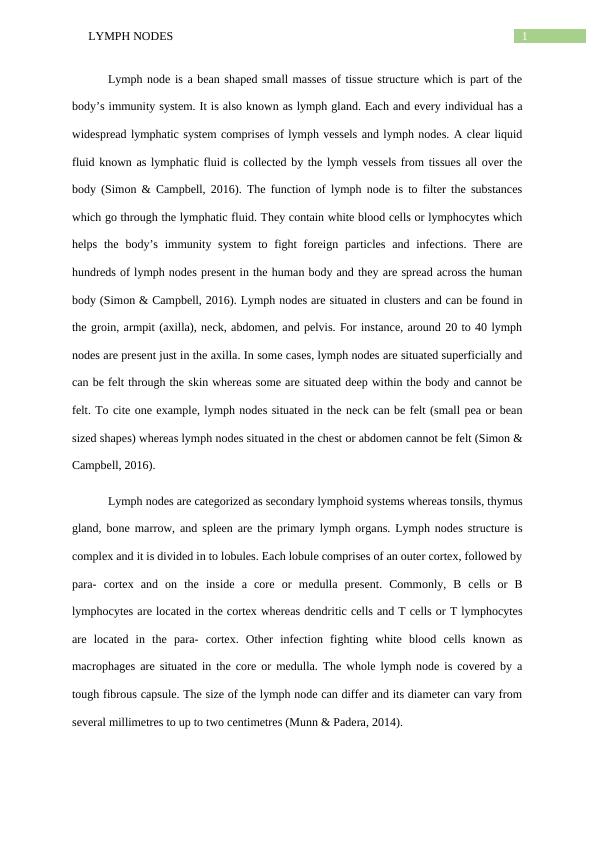Lymph Nodes and Its Function
Describe the form and function of lymph nodes, their role in the body, their connection to other organ systems, and their importance.
4 Pages766 Words212 Views
Added on 2023-04-25
About This Document
Lymph nodes are small masses of tissue that filter substances in the lymphatic fluid. They contain white blood cells that help the body's immune system fight foreign particles and infections. Lymph nodes play a vital role in fighting infections and filtering unwanted materials from the body.
Lymph Nodes and Its Function
Describe the form and function of lymph nodes, their role in the body, their connection to other organ systems, and their importance.
Added on 2023-04-25
ShareRelated Documents
End of preview
Want to access all the pages? Upload your documents or become a member.
Cytokines and Chemokines Assignment PDF
|35
|921
|115


